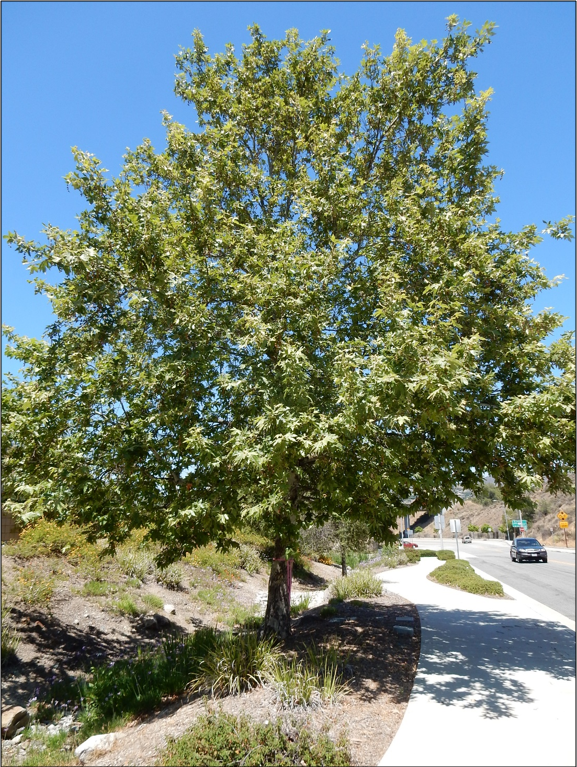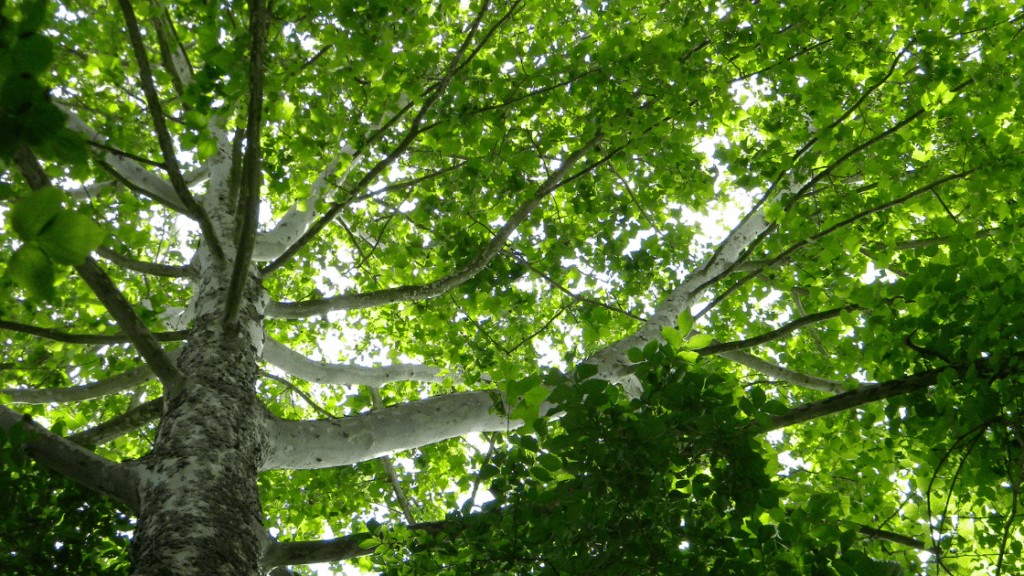california sycamore tree problems
California sycamore leaves and seed balls Sycamore tree bark. Sycamore canker stain is a fungal disease that affects sycamores and London plane trees in.

Facts About The Sycamore Tree Tips For Growing Sycamore Trees
This phase occurs in the spring before leaf emergence killing tips of small 1-year-old twigs.

. California sycamore Platanus racemosa is a majestic tree up to 100 feet 32 m in height and more than five feet 15 m in diameterA sycamore may have one or several trunks which may be erect or wildly twisted and bent. Although most sycamore pests cause little or no mortality they reduce growth and mar the trees beauty. Dry soil can lead to a short life for this native riparian tree.
Insure the health and life of your trees with a FREE Tree Safety Evaluation. This is a common problem with the california sycamore tree platanus racemosa. The expanding buds die because of the girdling action of.
It is along creeks in the foothills and coast ranges of Calif. 70 Western sycamore borer Synanthedon resplendens Contents 3 Diseases Acorn diseases 72 Drippy nut Brenneria quercina Diseases affecting leaves and twigs 74 Early defoliationleaf browningdrought stress 76 Oak anthracnose twig blight and leaf spots. The tree has been severely topped in the past.
Apiognomonia errabunda Discula umbrinella. This phase occurs in April and May. Western Sycamore is a species of plane tree known by several other common names including California sycamore California plane and Aliso.
The bark has been likened to army camouflage. The tiny hairs on the seed balls irritate skin and can cause respiratory distress if inhaled by sensitive people. Anthracnose is most severe in years with cool wet spring weather.
Sycamore trees are some of the oldest largest trees in the world. A fungal disease sycamore anthracnose typically affects the young shoots and leaves of a tree. Leaf blight or defoliation early in the summer.
The leaf drop is likely due to anthracnose. It is also planted as a landscape tree in its native range. Northern Hemisphere parts of the tropics and temperate regions of the Southern.
Pruning infected branches can slow its spread. The bark is smooth and pale with patches of tan and gray sometimes tinged with pink and green. American sycamore is one of many plants susceptible to aphid infestations.
Raining down are pieces of these beautiful California Sycamore Trees. It is a very recognizable tree that you can easily identify when you see it. Signs that a sycamore tree is suffering from this disease.
Wear a mask or respirator and gloves when removing the seeds from a seed ball. Formations of dead or dying twigs and small branches called witches brooms. California sycamore tree problems.
Common Pests and Plant Diseases. Cankers cause problems in localized areas. Dont wait until you have a tree removal problem.
It can be very difficult to treat but it doesnt typically kill mature established trees. As the tree ages the thin papery bark tends to peel away from the trunk. A fungal disease sycamore anthracnose typically affects the young shoots and leaves of a tree.
Sycamore Anthracnose. It grows best in moist soils that do not dry out. Insects and diseases are continual threats to sycamores.
California sycamore tree leaves become orangey-yellow in the fall. In a land of few trees the sycamore stood out. Twisted or gnarled branches or twigs.
It has only moderate tolerance to salt and drought when well established. Your Sycamore tree is probably a California Sycamore Platanus racemosa a widely planted residential tree for its beauty and shade which can live for over 150 years. While generally easy to get along with Sycamores do have their problems at times namely Anthracnose and Powdery Mildew see httpwwwipmucdaviseduPMGGARDENPLANTSsycamorehtml.
Brisk Fall winds are among us. Anthracnose is a common fungal disease of sycamore ash maple oak and other trees. The California sycamore tolerates many soil textures including acidic alkaline compacted and wet.
It is native to California and Baja California where it grows in canyons floodplains and along streams in several types of habitat. Its fairly messy shedding a generous supply of leaves seed balls twigs and strips of bark. Besides its messiness sycamore causes headaches in other ways.
For centuries they have provided shelter sustenance and shade for both animals and humans. Another common disease of sycamore trees is powdery mildew fungus. Sycamore anthracnose is one of the most common diseases that commonly affect California sycamore.
The danger may be intensified in large plantings which support a rapid build-up of damaging agents. While it looks disfiguring it is not fatal and the tree will recover without intervention. As fall approaches us we come across brittle limbs due to drought.
Then it will be drought tolerant only where there is a. Unlike sycamore anthracnose and canker. In autumn leaves turn a subtle yellowish brown before falling off.
In spring when the first flush of leaves begin to unfurl they may be subject to anthracnose a fungal disease that causes some of the leaves to curl up. This disease may appear as four distinct phases. While anthracnose may cause extensive defoliation it does not cause serious harm to healthy well-established trees.
The trees overall health at the time of inspection is moderate. Sycamore anthracnose spreads from an infected tree to healthy trees when its fungal spores are transported by the wind. A fast 75 deciduous tree.
It will grow to 15-20 ft. It can be treated with fungicides. It takes takes wind heat but not drought tolerant until established.
Aphids can invade any landscape but they run especially rampant on landscapes where the use of chemicals has eliminated aphid. Sycamore anthracnose is one of the most common diseases that commonly affect California sycamore trees. Many problems are associated with sycamore trees.
Well-known to the native Tongva Gabrielino people of the region the western sycamore Plantanus racemosa was one of the few trees to shade the lowlands of coastal Southern CaliforniaWhen the Spanish first encountered them the trees escaped easy classification. It is caused by Xylella fastidiosa a bacterial pathogen that kills off entire branches of the tree. California sycamore tree bark has a patchy look combining colors such as tan pinkish-gray white and beige.
Trees usually survive these attacks but may lose apical control temporarily resulting in increased lateral growth and decreased height. Bacterial leaf scorch can also be a problem. California sycamore Platanus racemosa is very susceptible to anthracnose which disfigures the tree giving it a twisted appearance.
Its prone to attacks from insects and diseases. Some pieces are larger than others.

What To Do With Sycamore Balls Sycamore Tree Sycamore Seed Trees To Plant

Platanus Occidentalis Sycamore Tree Trees To Plant Tree Identification
Big Sycamore Tree Big Problem Hort Coco Uc Master Gardener Program Of Contra Costa Anr Blogs

Platanus Wrightii Arizona Sycamore Native Deciduous Tree Found Near Water So Benefits From Supplemental Irrigation Plants Backyard Design Garden Landscaping

Diseases Of The California Sycamore Tree Evergreen Arborist Consultants

Common Problems With Sycamore Trees Learn About Sycamore Tree Pests And Disease

Sycamore Pros Cons And Cautions Of The Great Deciduous Shade Tree Outdoor Garden Accessories

Plants For Wet Locations California Sycamore Platanus Racemose 40 50 Ft High 30 40 Ft Wide Zone 7 California Native Plants Trees To Plant Landscape Design

Pin By Kate On Arbor Sycamore Tree Rainbow Eucalyptus Sycamore